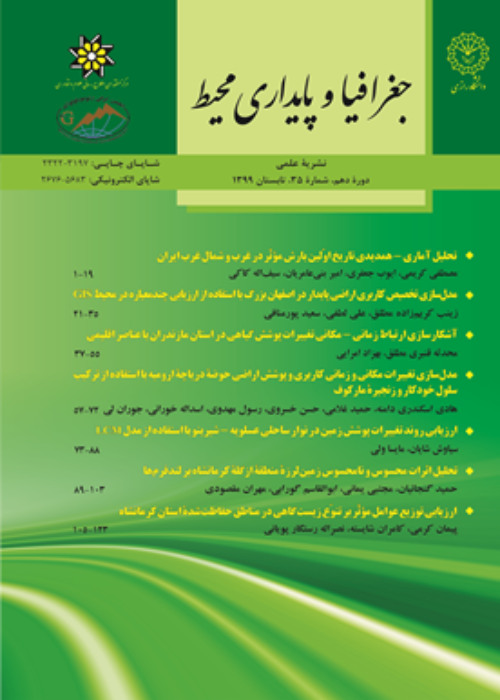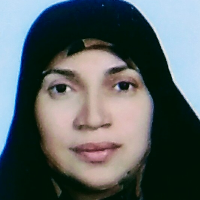Mixed Land use Pattern in Deteriorated and Inefficient Neighborhoods of Region Eighteen of Tehran and its Role in Sustainable Neighborhood Regeneration
Urban development based on the mixed land use is a new approach not only to regulate and make optimal use of physical space but also achieve sustainability, especially in the process of regenerating deteriorated and inefficient urban area of neighborhoods. The current study aims to investigate the correlation between mixed land use and sustainability indicators in deteriorated and inefficient urban area of neighborhoods. In this study, after evaluating the amount of mixed land use by entropy models, access scale and focal statistics have been calculated by using a questionnaire and SPSS software. Moreover, the degree of stability of deteriorated and inefficient urban area and also the correlation between mixed land use and sustainability were also investigated. The target tissues of the research have been calculated. Findings indicate that the rate of mixed land use in 17 neighborhoods of the study area does not have the same distribution and in terms of stability, all deteriorated and inefficient urban area of the study areas are below the average stability level which are considered unstable. Besides, the findings of the third part of the study indicate that there is a positive relationship and correlation between the mixed land use of neighborhood and sustainability indicators (participation, diversity and visual richness) and vice versa, with increasing mixed land use, sustainability in indicators (correlation,Vitality, accessibility, greenery, spatial affiliation, security, transportation, housing quality and environmental quality) decreased. The final results of the study reveal that the mixed land use can affect the level of sustainability of deteriorated and inefficient urban area in neighborhoods. However, the interrelationship of sustainability indicators with each other, the type of composition and quality of uses of the area of worn tissue and surrounding tissues can determine the aspects of sustainability of deteriorated and inefficient urban area.
Sustainable city is a Justified and reasonable alternative to the destructive urban planning of the twentieth century, and in addition to paying attention to environmental issues, social and human issues such as adequate housing and minimum living are also considered. The integration of uses creates safe and dynamic environments, both at the street level and in individual buildings. The basic principle in this planning is walking and paying attention to the elements related to the living, working and playing environment. So far, more than 67,000 hectares of deteriorated and inefficient urban area have been identified in more than 373 cities in Iran with a population of 8.5 million. The 18th Region of Tehran, as a part of such tissues of the country, is not exception to these problems and attention to efficient planning for their reconstruction can, while creating value, stimulate the process of tissue regeneration and solve problems within They will also meet part of the future development needs of Tehran and, as a result, prevent the growth of the outskirts of the city, whose infrastructure requires high costs.
In the first step, information on the current status of the area and, deteriorated and inefficient urban areas is extracted from the basic maps of the detailed plan and land use of the area and field harvesting, by GIS software. Using three entropy models, access index and focal statistics, the mixed land use of neighborhoods has been measured and finally the final weight of mixed land use of each neighborhood has been determined and the neighborhoods are ranked. In the second step, the sustainability indicators of the neighborhoods have been analyzed by SPSS software and the stability status of the deteriorated and inefficient urban area of the neighborhoods was determined. In the third step, the correlation between the mixed land use coefficient of neighborhoods and the sustainability indicators of each neighborhood has been measured and evaluated using Pearson correlation coefficient test, between the range of -1 to +1.
South Khalij fars neighborhood and Imam Khomeini neighborhood have been identified as the neighborhoods with high and low mixed uses respectively. Among the 13 indicators of neighborhood stability, all deteriorated and inefficient urban area in the 18th Region of Tehran Municipality are in a situation below the average level of stability, which is mostly due to the inefficiency of these deteriorated and inefficient urban area. There is a positive relationship between the combination of neighborhood uses and indicators (participation with correlation coefficient (0.232), diversity with correlation coefficient (0.282) and visual richness with correlation coefficient (0.315). This means that as the combination of uses increases, the amount of stability in the four mentioned indicators is increased, and vice versa, with increasing the mixed land use, the indicators of stability (correlation and interaction with correlation coefficient (-0.109), vitality (-0.479) ), accessibility (-0.186), greenery (-0.082), location (-0.641), security (-0.584), transportation (-0.597), quality of housing (-0.201) and the quality of the environment (-0.451) decreased, which means that there is a negative correlation between the mixed land use development and the recently mentioned indicators. Based on the views on sustainable urban development and modern urban planning such as smart growth, intensive city, mixed land use, dense city, etc., it is possible to use indicators such as increasing density in urban areas, compacting tissues, mixing and combining land uses, etc.as a desirable solution and strategy against urbanization based on zoning and segregation of uses, achieved more sustainable cities and neighborhoods. Despite the views expressed, the findings from the present study confirm the lack of positive correlation between the mixed land use of neighborhoods and the stability of tissues in most of the sustainability indicators in the neighborhoods of the 18th region. In 13 indicators, we see a negative correlation between the mixed land use of neighborhoods and sustainability indicators (correlation and social interaction, vitality, accessibility, greenery, spatiality, security, transportation, housing quality and environmental quality) and only in 3 indicators (Participation, diversity and visual richness) have been positively correlated. In addition to the degree of tissue wear, the existence and spread of incompatible uses in the vicinity of residential textures such as iron market, sand mines, two roads iron, factories and industries, manufacturing workshops, inefficient public transport, narrow passages with inadequate coverage, texture finesse and low pedestrian surface ratio can be recognized as the most important reasons for the inverse correlation between the mixed land use of textures and the stability of neighborhoods with a correlation coefficient of -194 which have made these textures more complex and unstable.
The 17 neighborhoods of Region 18 of Tehran Municipality have had different experiences in the field of mixed land use according to their capacities and location. The neighborhoods of Persian Gulf, South, Yaftabad, North and Ferdows have the most mixed land use, respectively, and the neighborhoods of Imam Khomeini, Behdasht, 17th of Shahrivar, respectively, have been identified as the least mixed neighborhoods in deteriorated and inefficient urban area respectively. All deteriorated and inefficient urban areas of the 18th Region do not have a good condition in terms of stability indicators. All these tissues can be considered unstable. The results of the third part of the study show a positive correlation between increasing land use and sustainability indicators in only three indicators (participation, diversity and visual richness) and in ten other indicators (correlation and interaction, vitality, accessibility, greenery, spatial affiliation). There is a correlation and inverse relationship between the mixed land use rate and tissue stability, confirms the overall negative correlation between the mixed land use rate and the stability of the target tissues in the eighteenth region.
- حق عضویت دریافتی صرف حمایت از نشریات عضو و نگهداری، تکمیل و توسعه مگیران میشود.
- پرداخت حق اشتراک و دانلود مقالات اجازه بازنشر آن در سایر رسانههای چاپی و دیجیتال را به کاربر نمیدهد.



